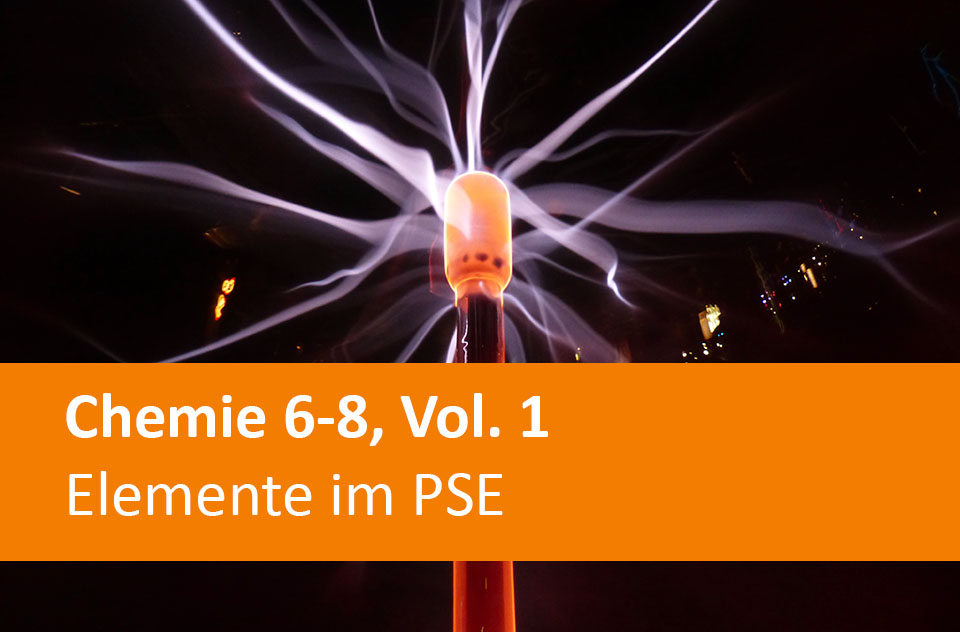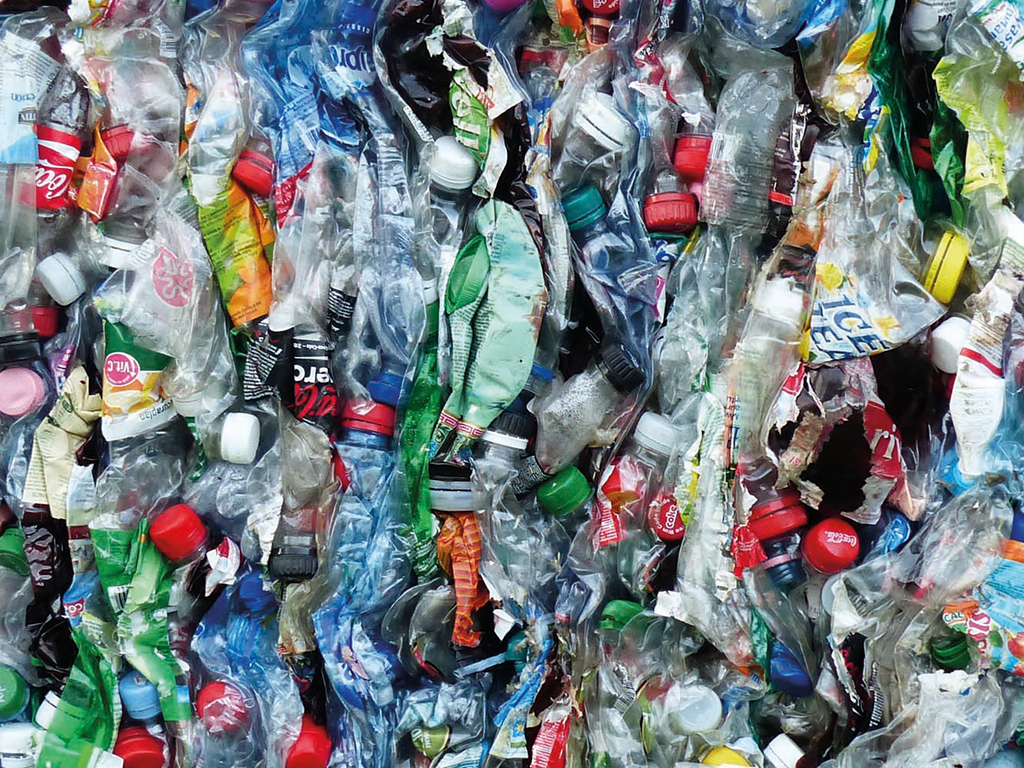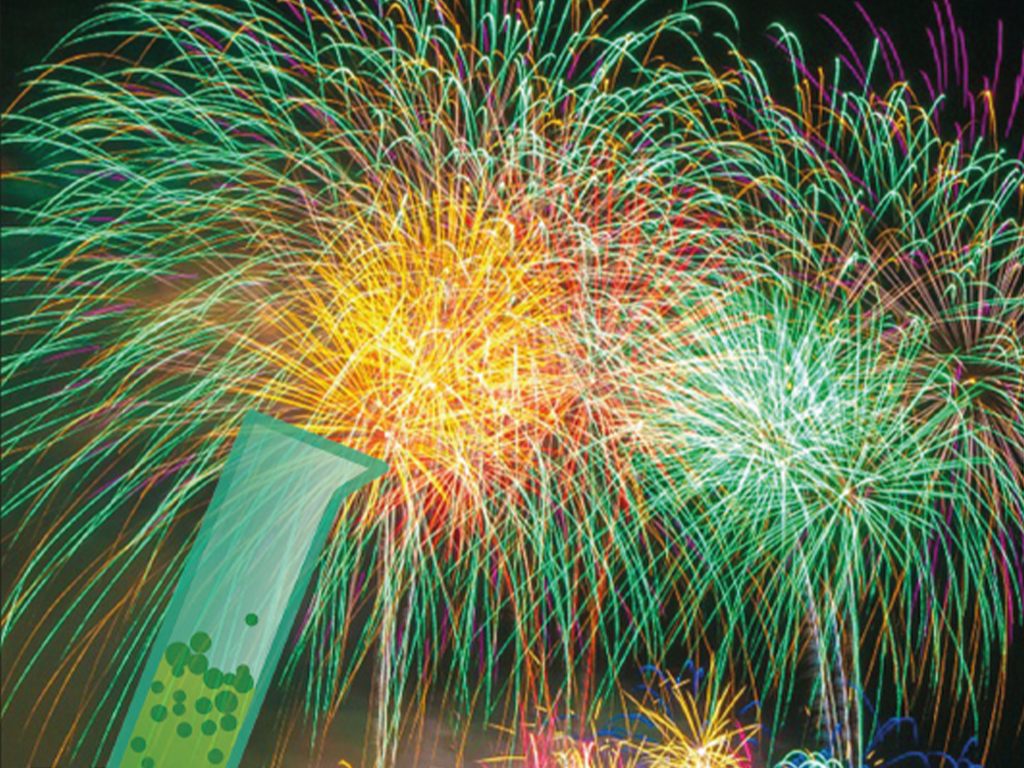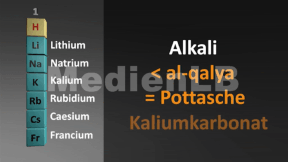
55500706
Elemente im PSE
In unserem Arbeitsheft Chemie 6-8, Vol. 1 – Elemente im PSE finden Sie 50 interaktive und didaktisch aufbereitete Aufgaben.
Included Tasks
- 1. 1. Hauptgruppe - Die Alkalimetalle - Interaktive Aufgaben mit Video
- 2. Alkalimetalle - Chemische und physikalische Eigenschaften
- 3. Alkalimetalle - Flammenfärbung und physische Eigenschaften
- 4. Alkalimetalle - Reaktion mit Halogenen - Aufgaben mit Video
- 5. Alkalimetalle im Haushalt - Aufgaben mit Video
- 6. Alkalimetalle - Reaktion mit Wasser - Aufgaben mit Video
- 7. Geschichte des Periodensystems - Aufgaben mit Video
- 8. Chemische Elemente - Ordnungszahl richtig zuordnen
- 9. Chemische Elemente - Atommasse richtig zuordnen
- 10. Ordne den Elementen die Eigenschaften zu - Interaktive Aufgaben
- 11. Ordne dem Element die Eigenschaften zu - Interaktive Aufgaben
- 12. Elemente - Finde die Bildpaare
- 13. Chemische Elemente - Sortiere nach Gruppen - Interaktive Aufgaben
- 14. Alkalimetalle in das PSE einordnen - Interaktive Aufgaben
- 15. Symbole und Ordnungszahlen im PSE - 5 interaktive Aufgaben (1)
- 16. Symbole und Ordnungszahlen im PSE - 5 interaktive Aufgaben (2)
- 17. Symbole und Ordnungszahlen im PSE - 5 interaktive Aufgaben (3)
- 18. Symbole und Ordnungszahlen im PSE - 5 interaktive Aufgaben (4)
- 19. Symbole und Ordnungszahlen im PSE - 5 interaktive Aufgaben (5)
- 20. PSE - 10 Zufallsaufgaben aus 25er Aufgabenpool
- 21. PSE - Protonen
- Neutronen und Elektronen - Aufgaben mit Video
- 22. PSE - Elektronenschalen - Aufgaben mit Video
- 23. Aussagen zu Elementen überprüfen - Interaktive Aufgabe
- 24. Aussagen zu Elementen überprüfen - Interaktive Aufgaben (1)
- 25. Aussagen zu Elementen überprüfen - Interaktive Aufgaben (2)
- 26. Aussagen zu Elementen überprüfen - Interaktive Aufgaben (3)
- 27. Aussagen zu Elementen überprüfen - Interaktive Aufgaben (4)
- 28. Aussagen zu Elementen überprüfen - 10 interaktive Aufgaben
- 30. Formeln die richtigen Namen zuordnen - Interaktive Aufgabe 30. C
- CO2 & Co. im Alltag - Aufgaben mit Video
- 31. Kohlenstoff im Alltag - Aufgaben mit Video
- 32. Kohlenstoffverbrennung - Aufgaben mit Video
- 33. Kohlenstoffvorkommen - Interaktive Aufgaben mit Video
- 34. Die Kristallstruktur - Aufgaben mit Video
- 35. Definition Kristall - 4 Aufgaben als Druckvorlagen
- 36. Was ist ein Kristall - Aufgaben mit Video
- 37. Natriumchlorid - 2 Aufgaben als Druckvorlagen
- 38. Geometrie von Kristallen - Aufgaben mit Video
- 39. Chemische Elemente - Steckbrief - Aluminium - Interaktive Aufgabe
- 40. Chemische Elemente - Steckbrief - Bor - Interaktive Aufgabe
- 41. Elementen das richtige Aussehen zuordnen (1)
- 42. Elementen das richtige Aussehen zuordnen (2)
- 43. Edelgase - 5 Interaktive Aufgaben (1)
- 44. Edelgase - 5 interaktive Aufgaben (2)
- 45. Edelgase - 5 interaktive Aufgaben (3)
- 46. Edelgase - 5 interaktive Aufgaben (4)
- 47. Eigenschaften von Aluminium - Aufgaben mit Video
- 48. Reaktion von Eisenoxid mit Aluminium - Aufgaben mit Video
- 49. Aluminium - Eloxiervorgang - Aufgaben mit Video
- 50. Aluminium Eloxieren - 3 Aufgaben als Druckvorlagen
Curriculum-centred and oriented towards educational standards
Matching
Plastic
Plastic has been around for not longer than roughly 100 years, and the synthetic material is a brilliant invention. Its production is cheap, it can take almost any possible form, it is light-weight, versatile and, above all, inexpensive.
Fuel Cell
A smartphone offers a lot of opportunities nowadays. The numerous apps and applications may enrich your daily life but cost a lot of electricity. It is particularly annoying when the device fails at the most inconvenient moments. Conventional rechargeable batteries are often empty after one day already, and the device needs to be plugged in. Besides many others, also this problem could be solved by using fuel cells – thus considerably increasing the duration of the smartphone.









